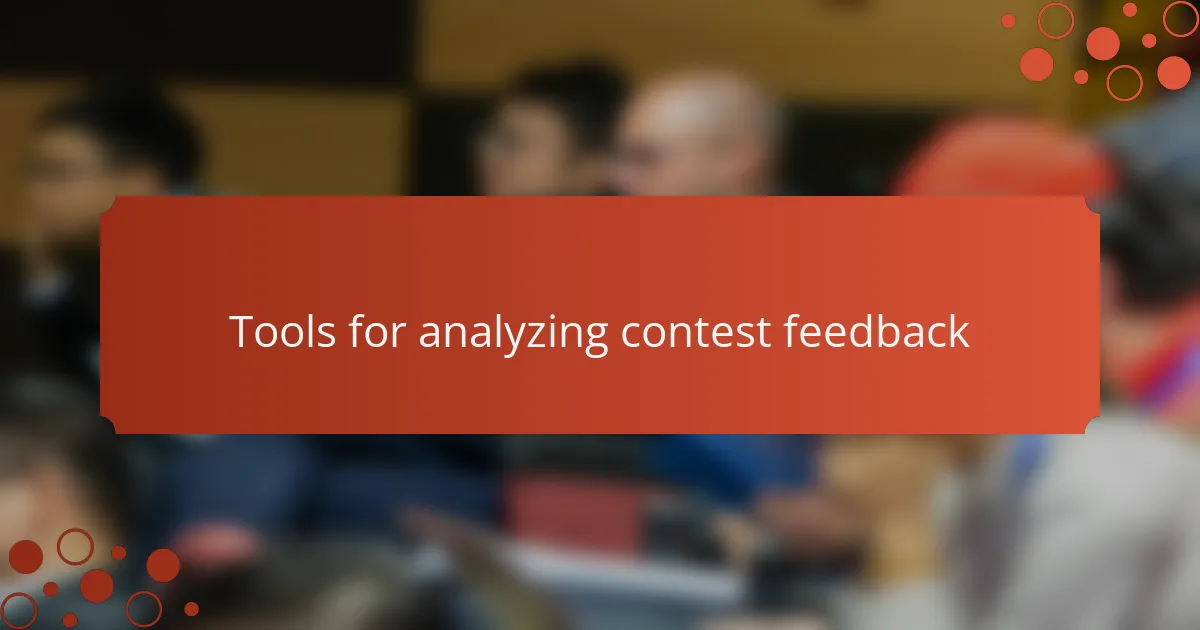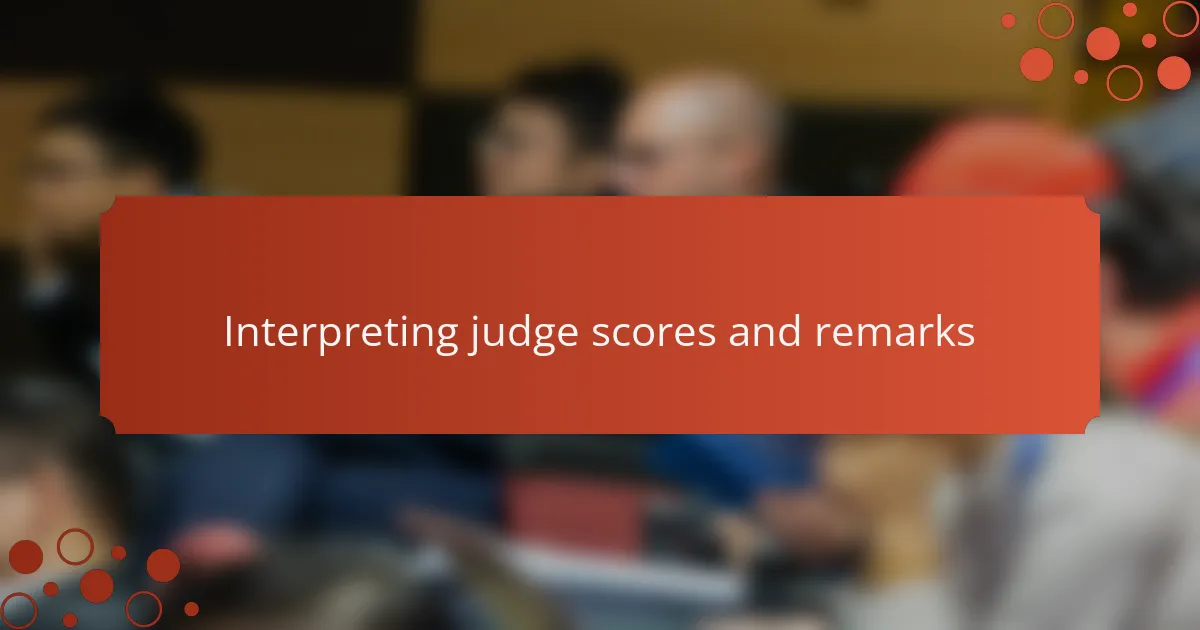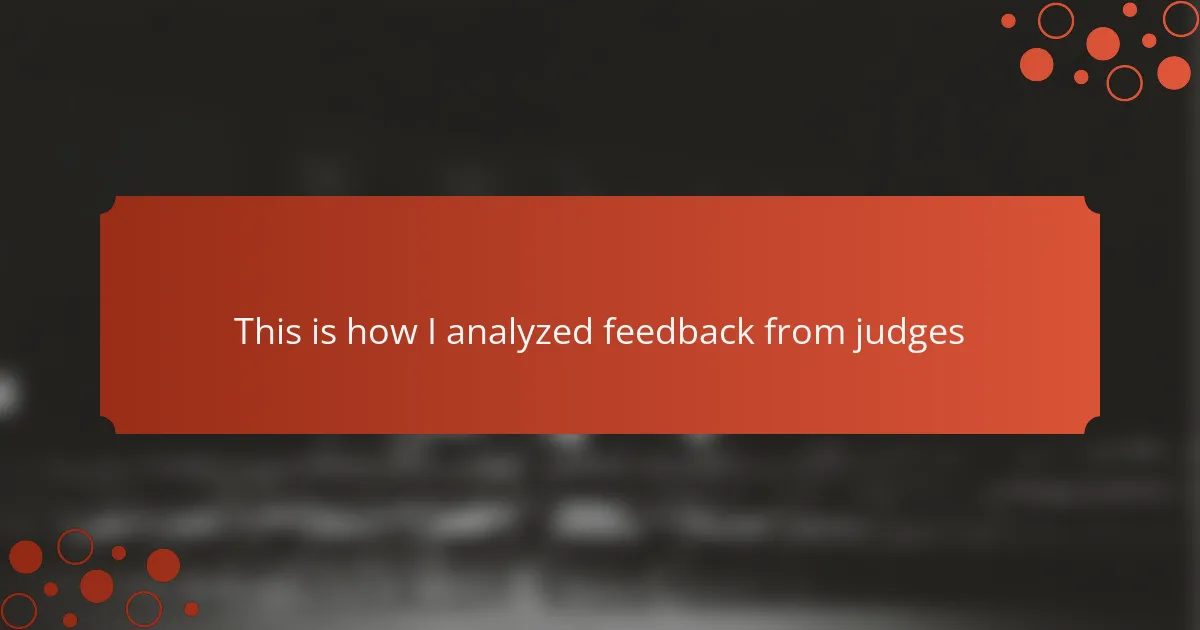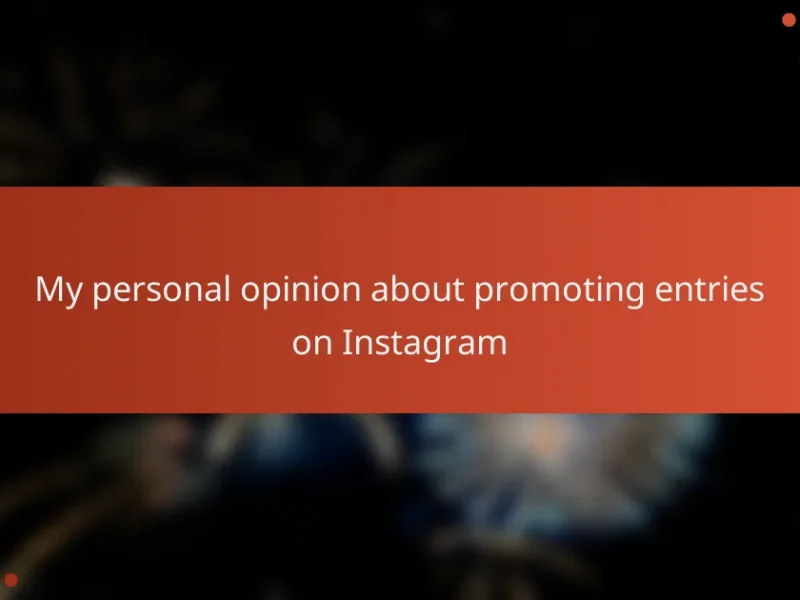Key takeaways
- Understanding judge feedback involves interpreting both technical and emotional aspects to improve your work effectively.
- Common categories of feedback include technical execution, storytelling, emotional connection, and originality.
- Tools like spreadsheets and sentiment analysis can help organize and clarify judge comments, making it easier to identify actionable insights.
- Applying feedback requires balancing critiques with personal creative goals to enhance storytelling while maintaining authenticity.

Understanding judge feedback in contests
When I first received feedback from judges in a video contest, I was overwhelmed by the variety of comments—some clear, others vague. Understanding judge feedback isn’t just about reading the words; it’s about interpreting the intention behind them. Have you ever wondered why certain critiques resonate while others leave you puzzled?
Over time, I realized that judges often focus on both technical skills and emotional impact. It helped me to separate practical advice, like improving shot composition, from subjective opinions about storytelling. This approach made the feedback less intimidating and more actionable.
What struck me most was how feedback reflects the judges’ own perspectives and experiences. Recognizing this made me more open to critique instead of defensive. It’s like having a conversation where each judge offers a unique angle—and it’s up to you to decide which points will help you grow.

Common feedback categories from judges
One category I noticed right away is technical execution—things like lighting, sound quality, and editing smoothness. When a judge pointed out my shaky camera work, I initially felt discouraged. But looking back, it was exactly the practical feedback I needed to make my next video look more professional.
Another common category is storytelling and emotional connection. I remember one comment saying my video lacked “heart,” which stung at first. Yet, that pushed me to focus on crafting narratives that truly resonate, not just flashy visuals. Don’t you think a story’s power often outweighs technical perfection?
Then there’s originality and creativity, which judges tend to highlight. Sometimes I was praised for taking risks, other times gently reminded to avoid clichés. This made me realize that creativity isn’t just about being different—it’s about meaningful choices that engage the audience. Have you ever felt stuck between playing it safe and breaking new ground?

Tools for analyzing contest feedback
When I started analyzing judge feedback more systematically, I turned to tools like spreadsheets to organize comments by category—technical, storytelling, creativity. It was surprising how visually sorting these notes helped me spot patterns and recurring suggestions that I might have otherwise missed. Have you ever tried breaking down feedback this way to avoid feeling overwhelmed?
I also found that using simple software like word clouds or note-taking apps made it easier to highlight key phrases judges repeated. These tools don’t replace thoughtful reflection, but they act like a filter, showing which points are worth paying more attention to. Sometimes, I’d circle back to a phrase that popped up multiple times and ask myself why it mattered so much.
For more detailed analysis, I experimented with sentiment analysis tools. Admittedly, they can’t fully capture the nuance of judge comments, but they offered a new perspective on the overall tone—whether positive encouragement or constructive criticism. This helped me balance my emotional response, reminding me feedback isn’t personal, but an opportunity to grow. Have you ever found tech helpful in keeping your mindset steady?

Interpreting judge scores and remarks
When I first saw the judge scores alongside their remarks, I wondered how much weight to give each number compared to the written feedback. I learned to view scores as a quick snapshot of overall impressions, while the comments revealed the real story behind those numbers. Have you noticed that sometimes a modest score comes with detailed advice that’s more valuable than a high mark with little explanation?
Parsing remarks can feel like decoding a puzzle, especially when judges use broad terms like “needs more energy” or “lacks cohesion.” I found it helpful to connect those phrases back to specific scenes or elements in my video. For example, when a judge said my pacing was off, I revisited the editing rhythm and saw exactly where the energy dipped. This made the feedback concrete and fixable rather than vague criticism.
One trick I’ve found effective is comparing scores and comments across all judges to identify consensus or outliers. When several judges mentioned a weak ending and gave low scores in storytelling, that clearly signaled where improvement was needed. But when remarks and scores diverged widely, it reminded me that creativity and taste are subjective. How do you decide which judge’s voice to trust most in those moments? For me, it’s about balancing honest critique with my own creative vision.

Applying feedback to improve videos
Applying feedback isn’t just about making a checklist of fixes; it’s about understanding the story you want to tell and how each tweak brings that vision closer to life. I remember struggling to adjust the pacing of one video after a judge said it felt “dragging,” and once I re-edited with that in mind, the whole rhythm suddenly clicked. Have you ever noticed how even small timing changes can completely reshape how a video feels?
Sometimes, applying feedback means experimenting and taking risks. After a judge suggested my transitions were too predictable, I tried something bolder—and yes, it felt uncomfortable at first. But that discomfort pushed me into new creative territory I wouldn’t have explored otherwise. Isn’t growth often found just beyond our comfort zones?
What’s tricky is knowing when to trust your instincts versus following every piece of advice. I’ve learned to weigh judge feedback alongside my own goals, picking the suggestions that genuinely enhance my video’s message. This balance keeps the work authentic while still evolving based on expert eyes. How do you decide which critiques to embrace and which to set aside?


